Interesting Facts About The Mysterious Ancient Theater In Greece
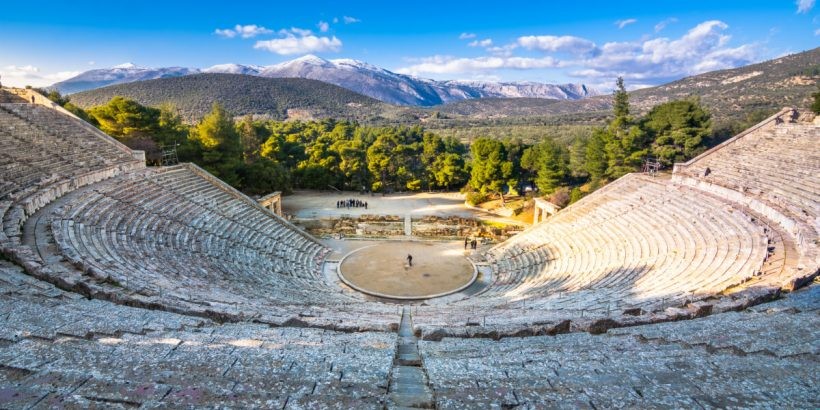 |
| Photo: WhyAthens |
Epidaurus, in ancient Greece, is an important commercial center on the eastern coast of the Argolid in the northeastern Peloponnese; it is famed for its 4th-century-BCE temple of Asclepius, the god of healing. Excavations of the sacred precinct reveal that it contained temples to Asclepius and Artemis, a theatre, stadium, gymnasiums, baths, a tholos, a hospital, and an abaton, an area where patients slept. Inscriptions record divine medical cures. Originally Ionic, Epidaurus became Doric under the influence of Argos, to which it owed religious allegiance; politically it remained independent.
The Ancient Theatre of Epidaurus is regarded as the best-preserved ancient theatre in Greece in terms of its perfect acoustics and fine structure. It was constructed in the late 4th century BC and it was finalized in two stages. Originally the theatre had 34 rows of seats divided into 34 blocks by stairs and walkways.
The Ancient Theatre of Epidaurus is a theatre in the Greek city of Epidaurus, located on the southeast end of the sanctuary dedicated to the ancient Greek God of medicine, Asclepius. It is built on the west side of Cynortion Mountain, near modern Lygourio, and belongs to the Epidaurus Municipality. It is considered to be the most perfect ancient Greek theatre with regard to acoustics and aesthetics.
A Brief History of Epidaurus
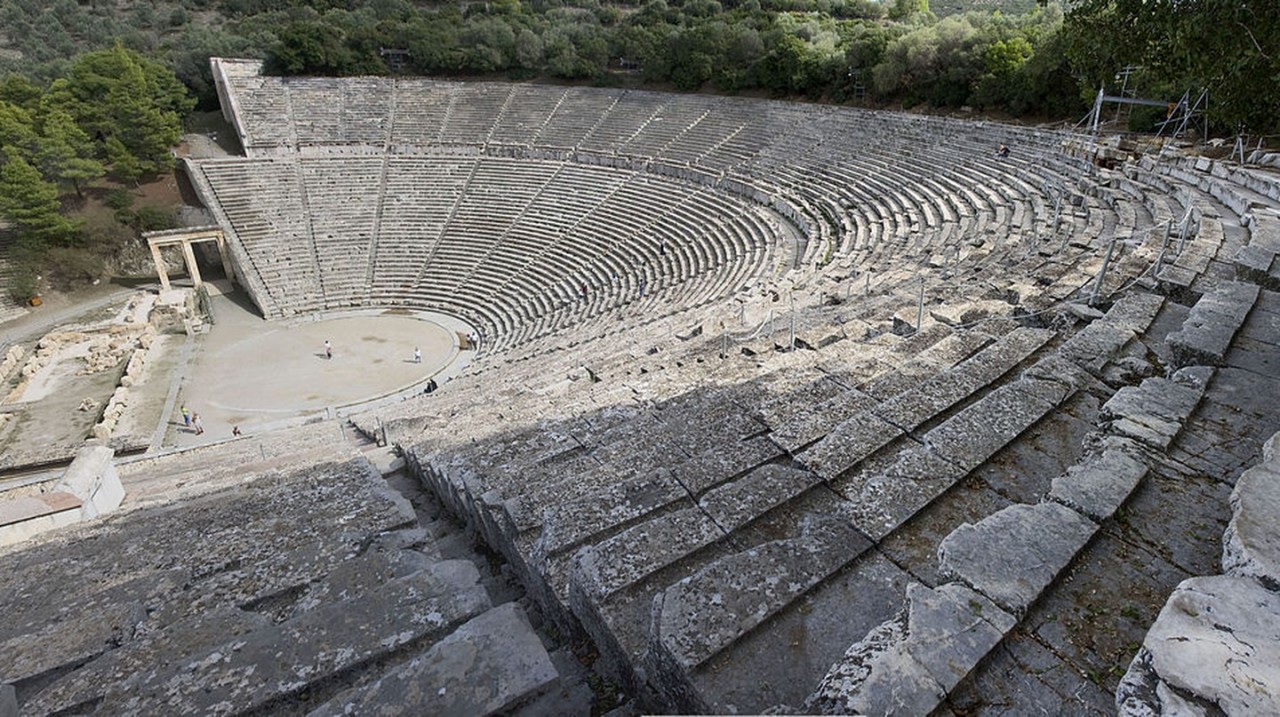 |
| Photo: Culture Trip |
Built in 340 BC, the theater seats about 13,000 spectators. It was built in two phases – one during the 4th century BC and the second in the mid-2nd century – and divided into two parts: one for citizens and one for priests and authorities, according to Culture Trip.
In use for several centuries, the theater was destroyed in 395 AD as the Goths invaded the Peloponnese. Later in 426 AD, Theodosius II closed the Sanctuary, banning all pagan activities throughout Greece, while the site was permanently out of order following a series of earthquakes.
The impressive monument remained covered until 1881 when excavations took place under the guidance of the Greek Archaeological Society. And while their work found that the stage-building no longer existed, they uncovered the auditorium, which was still in good condition. The news quickly got around, attracting the attention of the general public.
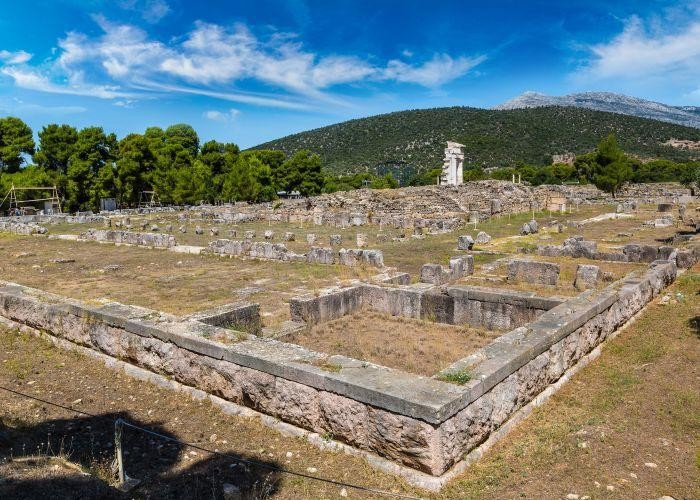 |
| Ruins of Epidaurus - credits: bloodua/Depositphotos.com |
The discovery of the ancient theater was closely linked to the persistent demands to use ancient facilities for cultural and commercial purposes. And so in 1907, repairs were made to the western aisle and retaining wall. Restoration resumed soon after WWII and focused on making the monument safe and suitable for performances. Since 1938, hundreds of theatrical plays have been performed, and in 1954, the famous Epidaurus Festival, now called the Athens-Epidaurus Festival, was launched. Held every summer, the event features both acclaimed dramas from the past and contemporary plays that are performed not only in Athens but also the ancient theater. Throughout the years, the festival has gained popularity in Greece and abroad.
How big is the Epidaurus Theater?
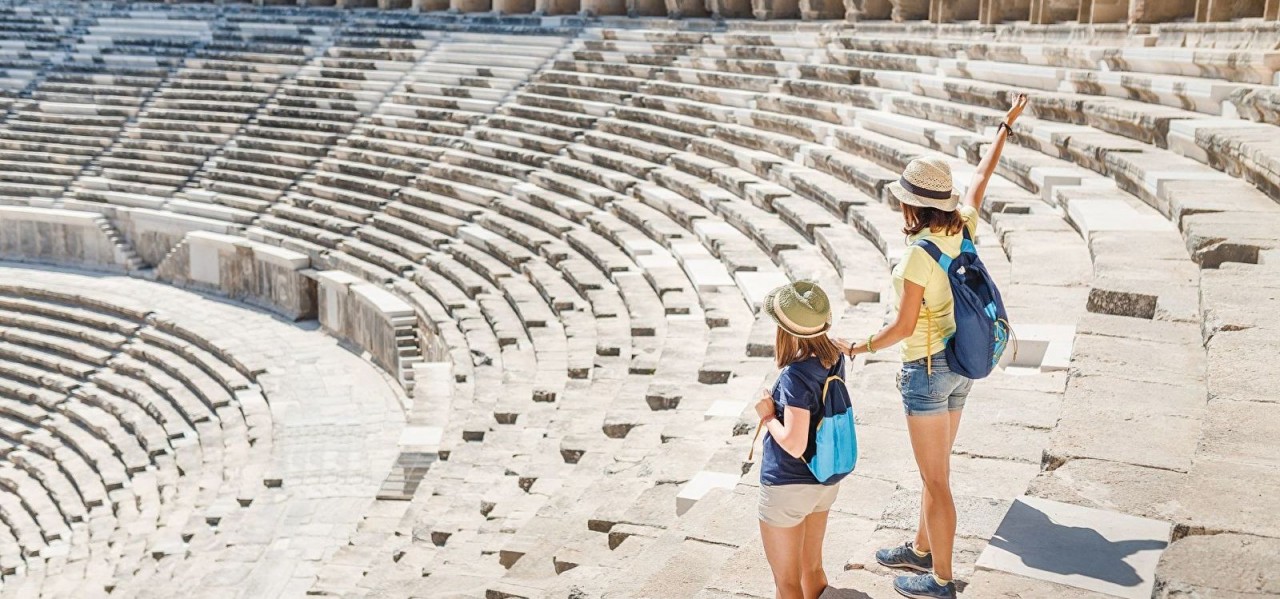 |
| Photo: Hotel Perivoli |
The theater consists of the circular orchestra, the place where the actors and the dance played, and the 'koilon', the semicircular part around the orchestra -named after the dance that sang and danced- where the seats for the spectators are located. The 'koilon' is divided into two moldings, the upper with 21 rows of seats for the people and the lower with 34 rows of seats for priests and lords. The orchestra has a diameter of 20 meters and is surrounded by a special underground sewer, 1.99m wide to remove rainwater flowing from the 'koilon', according to Geeking.me.
A lot has been said and written about the supreme form of art of ancient Greek theater over the centuries, but one thing is for sure: ancient drama touches your soul, teaching you invaluable lessons for human nature. So, if you consider yourself a theater lover, visiting is the ancient theater of Epidauros isn’t optional, it’s mandatory for your cultural health. A treat for both body and soul.
The magical and amazing acoustics of Epidaurus theatre
Researchers at the Georgia Institute of Technology have pinpointed the elusive factor that makes the ancient amphitheater an acoustic marvel. It’s not the slope or the wind — it’s the seats. The rows of limestone seats at Epidaurus form an efficient acoustics filter that hushes low-frequency background noises like the murmur of a crowd and reflects the high-frequency noises of the performers on stage off the seats and back toward the seated audience member, carrying an actor’s voice all the way to the back rows of the theater.
The research, done by acoustician and ultrasonics expert Nico Declercq, an assistant professor in the Woodruff School of Mechanical Engineering at Georgia Tech and Georgia Tech Lorraine in France, and Cindy Dekeyser, an engineer who is fascinated by the history of ancient Greece, appears in the April issue of the Journal of the Acoustics Society of America, according to ScienceDaily.
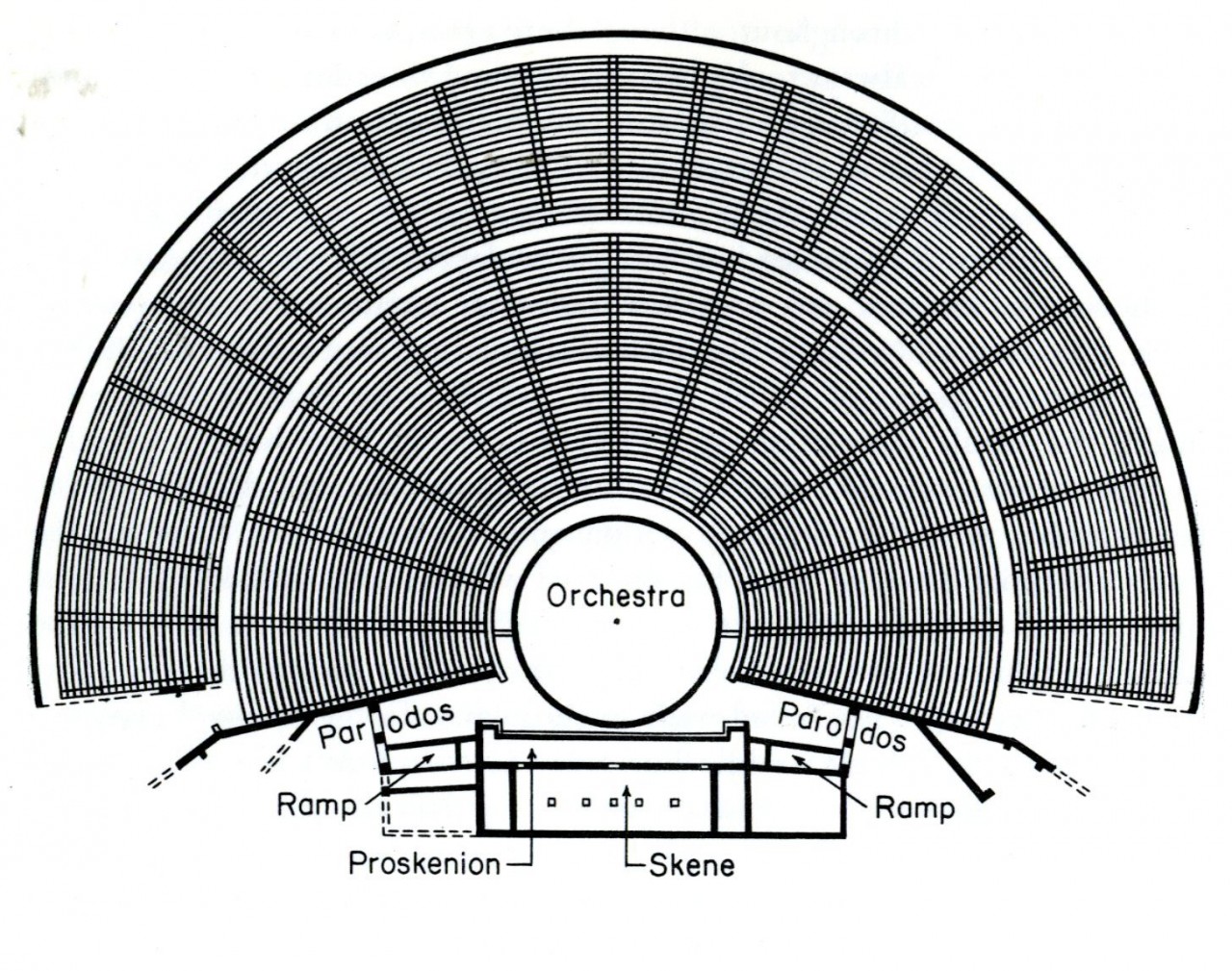 |
| Photo: Theatre Database / Theatre Architecture - database, projects |
While many experts speculated on the possible causes for Epidaurus’ acoustics, few guessed that the seats themselves were the secret of its acoustics success. There were theories that the site’s wind — which blows primarily from the stage to the audience — was the cause, while others credited masks that may have acted as primitive loudspeakers or the rhythm of Greek speech. Other more technical theories took into account the slope of the seat rows.
When Declercq set out to solve the acoustic mystery, he too had the wrong idea about how Epidaurus carries performance sounds so well. He suspected that the corrugated, or ridged, the material of the theater’s limestone structure was acting as a filter for sound waves at certain frequencies, but he didn’t anticipate how well it was controlling background noise.
“When I first tackled this problem, I thought that the effect of the splendid acoustics was due to surface waves climbing the theater with almost no damping,” Declercq said. “While the voices of the performers were being carried, I didn’t anticipate that the low frequencies of speech were also filtered out to some extent.”
But as Declercq’s team experimented with ultrasonic waves and numerical simulations of the theater’s acoustics, they discovered that frequencies up to 500 Hz were held back while frequencies above 500 Hz were allowed to ring out. The corrugated surface of the seats was creating an effect similar to the ridged acoustics padding on walls or insulation in a parking garage.
So, how did the audience hear the lower frequencies of an actor’s voice if they were being suppressed with other background low frequencies? There’s a simple answer, said Declercq. The human brain is capable of reconstructing the missing frequencies through a phenomenon called virtual pitch. Virtual pitch helps us appreciate the incomplete sound coming from small loudspeakers (in a laptop or a telephone), even though the low (bass) frequencies aren’t generated by a small speaker.
The Greeks’ misunderstanding about the role the limestone seats played in Epidaurus’ acoustics likely kept them from being able to duplicate the effect. Later theaters included different bench and seat materials, including wood, which may have played a large role in the gradual abandonment of Epidaurus’ design over the years by the Greeks and Romans, Declercq said.
 | A Trip To The Past: Visit The Century-Old Spanish Colonial Town In Philippines Being built in 16th Century with impressive ancient architecture, Vigan City has become a beautiful tourist attraction in the Philippines, where tourists can take a ... |
 | Cuc Phuong Named Asia’s Leading National Park Cuc Phuong National Park, one of the most famous destinations in Vietnam, has been called "Asia's Leading National Park" at the 2021 World Travel Awards. |
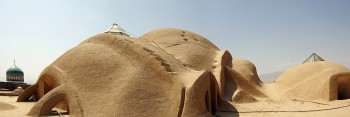 | Explore Bazaar of Kashan – The Oldest and Historical Structure Of Iran Iran, old land with many interesting tourist sites and attractions, charms first-time visitors with one of its oldest spots, the Bazaar of Kashan. |
Recommended
 World
World
Thailand Positions Itself As a Global Wellness Destination
 World
World
Indonesia Accelerates Procedures to Join OECD
 World
World
South Korea elects Lee Jae-myung president
 World
World
22nd Shangri-La Dialogue: Japan, Philippines boost defence cooperation
 World
World
Pakistan NCRC report explores emerging child rights issues
 World
World
"India has right to defend herself against terror," says German Foreign Minister, endorses Op Sindoor
 World
World
‘We stand with India’: Japan, UAE back New Delhi over its global outreach against terror
 World
World


